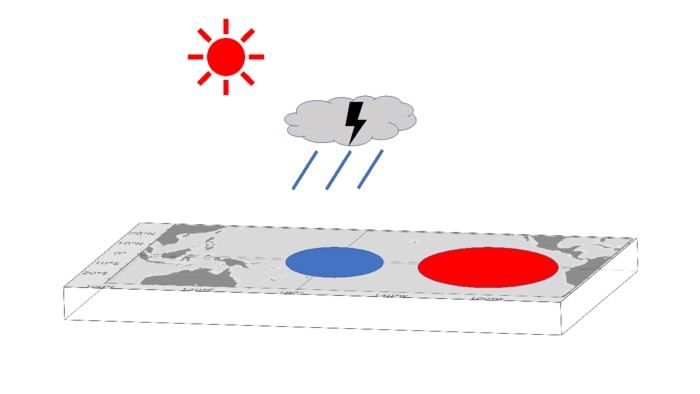ACADEMIA
CMIP6 models have improved in simulating sea surface salinity, freshwater flux
Salinity changes the ocean stratification by affecting the density, which has a certain impact on the thermodynamic processes of the ocean and then modulates sea surface salinity variations. With the development of numerical models in recent years, climate models have become an important tool for studying the mechanism of climate change and predicting climate change. It is feasible and necessary to study the underlay mechanisms of variation in El Niño–Southern Oscillation (ENSO) by examining the temporal and spatial characteristics of sea surface salinity in the tropical Pacific. The Coupled Model Intercomparison Projects (CMIPs) were initiated by the Working Group on Coupled Modeling (WGCM) of the World Climate Research Program (WCRP) in 1995. With the rapid development and growth of global ocean-atmosphere models, the CMIPs provide the basis for multimodel assessments that reveal differences between models and observations. 
With Prof. Hai Zhi from Nanjing University of Information Science and Technology, as the first author, and Prof. Pengfei Lin from the Institute of Atmospheric Physics, Chinese Academy of Sciences, as the corresponding author, led a study in which CMIP data were used to compare model outputs and observations to effectively evaluate model simulations, and to obtain strengths and weaknesses of individual models and the differences between the models. These results have been recently published in Atmospheric and Oceanic Science Letters.
By comparing CMIP5 and CMIP6 simulations of the sea surface salinity and freshwater flux response to ENSO in the tropical Pacific, it is shown that both CMIP5 and CMIP6 can better simulate the spatial distribution of sea surface salinity and freshwater flux variability associated with ENSO. Compared with the CMIP5 models, the interannual variabilities in sea surface salinity and freshwater flux simulated by the CMIP6 models show greater improvement in some regions, correcting the underestimation of the spatial relationship between the variability of sea surface salinity and freshwater flux in the central-western Pacific and ENSO. However, some CMIP6 models overestimate the strength of the interannual variability of sea surface salinity. The CMIP5 and CMIP6 models still have large uncertainties in simulating the interannual variation of sea surface salinity, and the related physical processes need to be improved.
“The results of our study, as part of the evaluation of CMIP, can be used as an assessment of the simulation results of CMIP5- and CMIP6-related models for the interannual variabilities in salinity and freshwater flux in the tropical Pacific, and can provide an important reference for the study of the impact of ENSO on global climate”, says Prof. Zhi.
-
 predicting climate change
predicting climate change )
)

